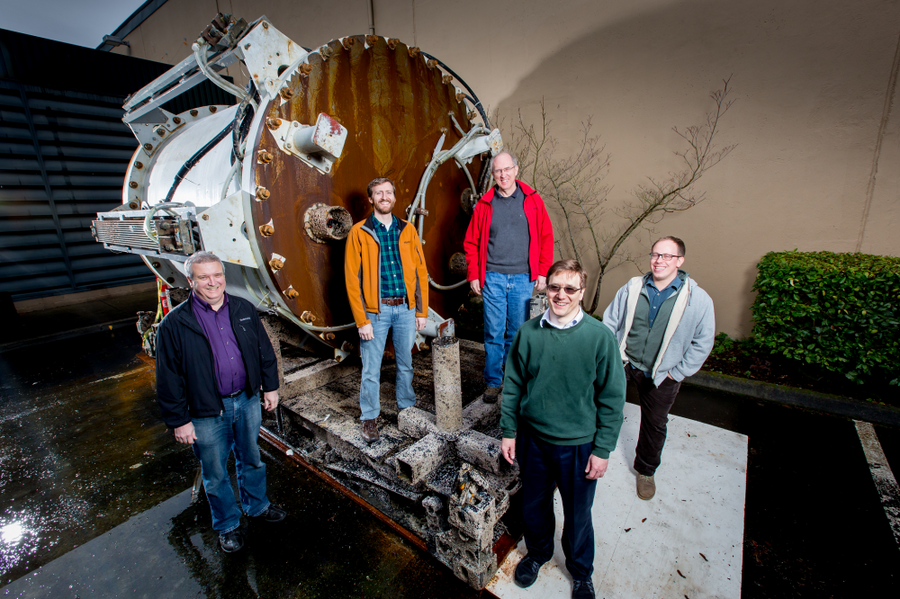Underwater tech: Why does Microsoft want to dunk its data centers?
In the quest for affordable data centers, Microsoft has gone where no technology company has gone before: underwater.
Data centers, which host everything from e-mail accounts to social media profiles, require lots of energy. Just as laptops and cellphones heat up when they are working really hard, data centers have thousands of computer servers that get very hot. To avoid overheating and crashing, companies are forced to foot expensive air conditioning bills.
Some companies such as Facebook have moved their data centers to Arctic locations to lower cooling costs.
But Microsoft tried a new way to cool data centers by placing an eight-foot server vessel 30 feet underwater. The experimental trial period of Leona Philpot, Microsoft's eight-foot prototype named after a character in the Xbox game "Halo," lasted between August and November of last year 1 kilometer off the California coast.
The conclusion? Leona Philpot was more successful than expected. And more important, say Microsoft engineers, underwater data centers hold exciting potential.
“When I first heard about this I thought, ‘Water … electricity, why would you do that?” Ben Cutler, a Microsoft computer designer who worked on the Project Natick system, told The New York Times. “But as you think more about it, it actually makes a lot of sense.”
Primarily, Project Natick could reduce latency, engineers’ term for the amount of time it takes servers to respond to users' online requests. Today’s data centers are built in remote places that offer the necessary room or colder climates – making data travel a long distance between its source and destination.
“Half of the world’s population lives within 200 km of the ocean so placing datacenters offshore increases the proximity of the datacenter to the population” says the Project Natick website, “dramatically reducing latency and providing better responsiveness.”
Microsoft also believes it can speed up the production process so a ready-to-use vessel is set up in just 90 days, which could come in handy for areas needing periodic data boosts, such as World Cup events or natural disaster sites.
And Microsoft suggests the future of underwater data centers holds environmental promise, not damage.
Natick engineers say the vessel consumes no water, does not heat up the water, and does not cause noise pollution for nearby sea life.
Using acoustic sensors, the engineers determined that the movements of nearby shrimp drowned out any underwater noise from Natick, and they “measured no heating of the marine environment beyond a few inches from the vessel,” Dr. Lee told The New York Times.
And in the future, engineers believe subsea data centers could be zero-emission by using underwater tidal power to generate the necessary electricity.
“Natick datacenters are envisioned to be fully recycled. Made from recycled material which in turn is recycled at the end of life of the datacenter,” the Microsoft team explains on Natick’s website. “A Natick datacenter co-located with offshore renewable energy sources could be truly zero emission: no waste products, whether due to the power generation, computers, or human maintainers are emitted into the environment.”
Instead, the greatest challenge involves the vessels’ relationship with humans, not the environment.
Data centers on land are easily accessible to engineers and witness frequent tweaks and fixes. But underwater systems, comparatively, need to survive years without maintenance or regular checkups. And Microsoft sees this challenge as a positive, not a negative.
“We see this as an opportunity to field long-lived, resilient datacenters that operate ‘lights out’ – nobody on site – with very high reliability for the entire life of the deployment, possibly as long as 10 years,” Natick’s website explains.
But the long-term feasibility and environmental impact remain to be seen with further trials. Microsoft is already working on its next underwater project, a data center three times the size of Leona Philpot.







